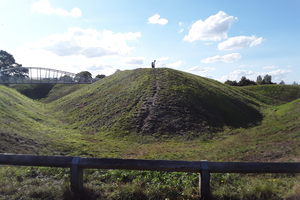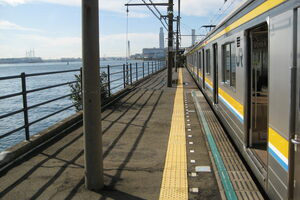Queen’s Sconce in Nottinghamshire, England

A sconce was a defensive structure that was developed as an earthwork. They normally followed a star-shaped plan to allow overlapping fields of fire. They were also capable of absorbing artillery blasts.
Several sconces were constructed around Newark in Nottinghamshire, England during the English Civil War. The town was overwhelmingly royalist and was subjected to sieges by Parliamentary forces. The Queen’s Sconce, named for the wife of Charles I, was the main defensive structure to the south of the town. It was designed to resist Parliamentary forces moving north via an ancient Roman road called the Fosse Way.
The structure now sits in a very attractive park called Sconce and Devon Park, which is actually a combination of two smaller parks. A steel bridge was constructed to give access over a deep ditch, about 60-feet wide and 15-feet deep, around the well-preserved structure. The only reason this site was not destroyed was that soldiers feared the plague and fled the region after the siege.
To commemorate the role Newark played in the English Civil War, a brilliant sculpture of a latticework cannon was placed within the structure. Also on top of the sconce is a cast metal map showing the distribution of defensive works around the town during the war.
There is a ton of information at the site and the sconce forms an integral part of the Newark Civil War Trail. There are also reenactment events held at the sconce conducted by the Sealed Knot Society. These include artillery exchanges, along with both infantry and cavalry charges.





